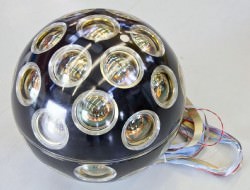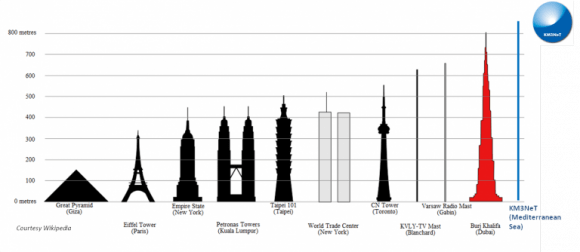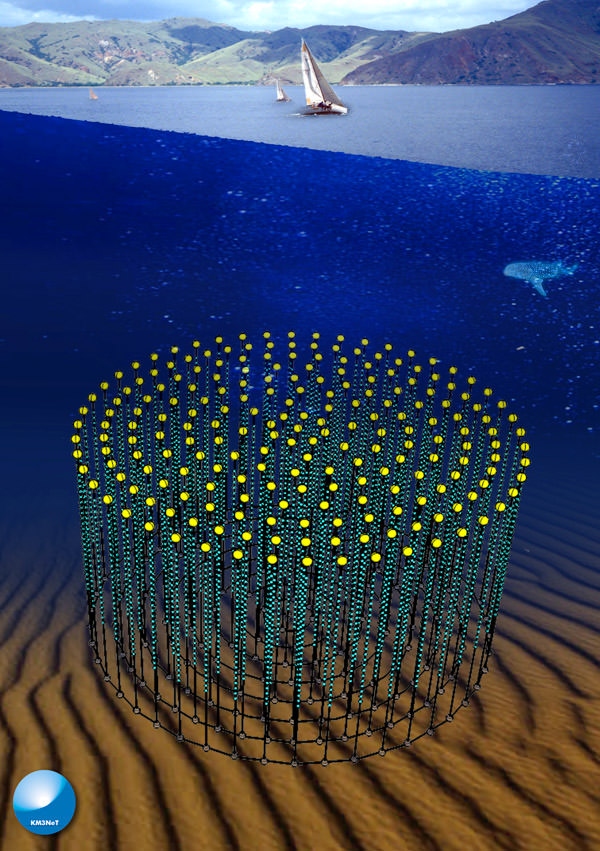[/caption]
The hunt for elusive neutrinos will soon get its largest and most powerful tool yet: the enormous KM3NeT telescope, currently under development by a consortium of 40 institutions from ten European countries. Once completed KM3NeT will be the second-largest structure ever made by humans, after the Great Wall of China, and taller than the Burj Khalifa in Dubai… but submerged beneath 3,200 feet of ocean!
KM3NeT – so named because it will encompass an area of several cubic kilometers – will be composed of lengths of cable holding optical modules on the ends of long arms. These modules will stare at the sea floor beneath the Mediterranean in an attempt to detect the impacts of neutrinos traveling down from deep space.
Successfully spotting neutrinos – subatomic particles that don’t interact with “normal” matter very much at all, nor have magnetic charges – will help researchers to determine which direction they originated from. That in turn will help them pinpoint distant sources of powerful radiation, like quasars and gamma-ray bursts. Only neutrinos could make it this far and this long after such events since they can pass basically unimpeded across vast cosmic distances.
“The only high energy particles that can come from very distant sources are neutrinos,” said Giorgio Riccobene, a physicist and staff researcher at the National Institute for Nuclear Physics. “So by looking at them, we can probe the far and violent universe.”

In effect, by looking down beneath the sea KM3NeT will allow scientists to peer outward into the Universe, deep into space as well as far back in time.
The optical modules dispersed along the KM3NeT array will be able to identify the light given off by muons when neutrinos pass into the sea floor. The entire structure would have thousands of the modules (which resemble large versions of the hovering training spheres used by Luke Skywalker in Star Wars.)
In addition to searching for neutrinos passing through Earth, KM3NeT will also look toward the galactic center and search for the presence of neutrinos there, which would help confirm the purported existence of dark matter.
Read more about the KM3NeT project here, and check out a detailed article on the telescope and neutrinos on Popsci.com.

Images property of KM3NeT Consortium

